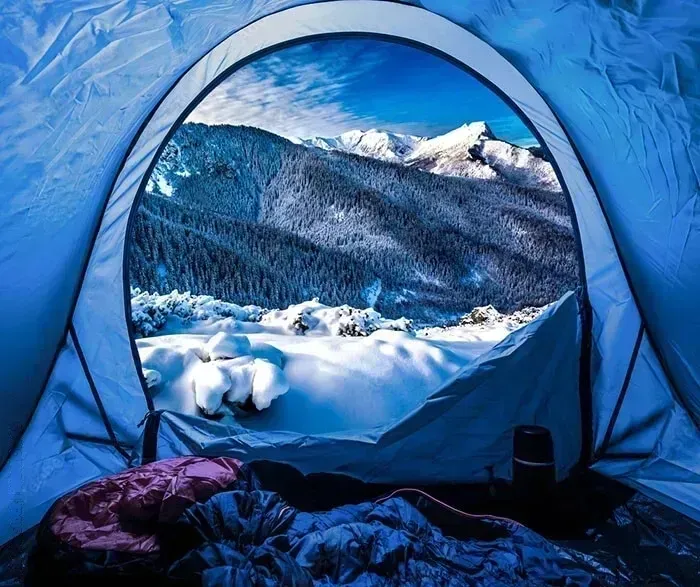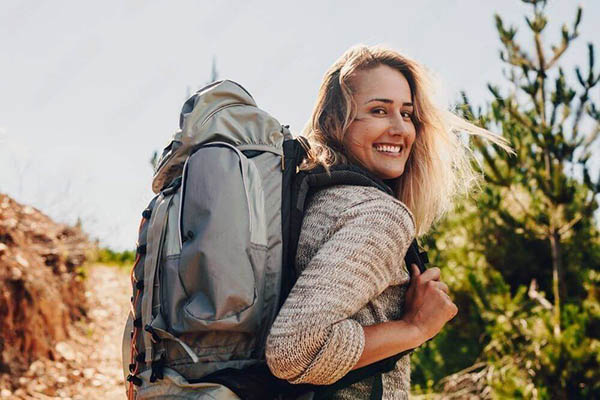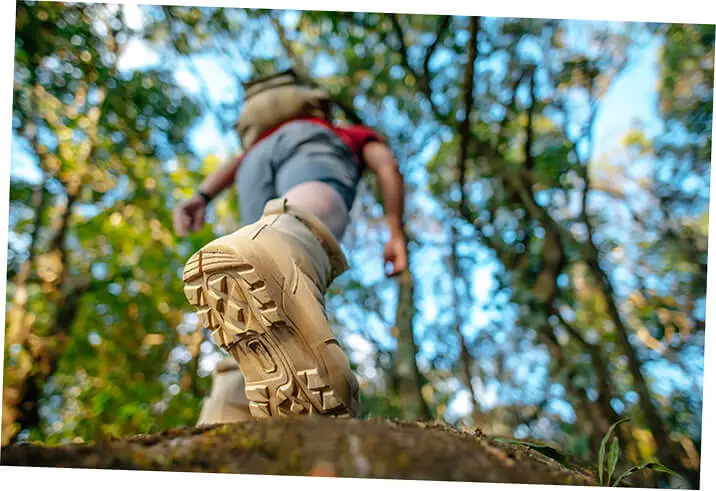Winter camping basics: Tips to stay safe and cozy
If you’re thinking about winter camping, there are a few basic tips you should know to stay safe and cozy. First, you need to make sure you have the right gear. Pack a good sleeping bag, a warm coat, and boots that will keep your feet dry. You also need to be prepared to deal with the cold nights. Have a good campfire and make sure you have enough food and water. Finally, you need to be aware of the dangers of winter camping. This includes hypothermia, frostbite, and avalanches. But don’t let these dangers deter you. Winter camping can be a great experience. Just be prepared and you’ll be fine.
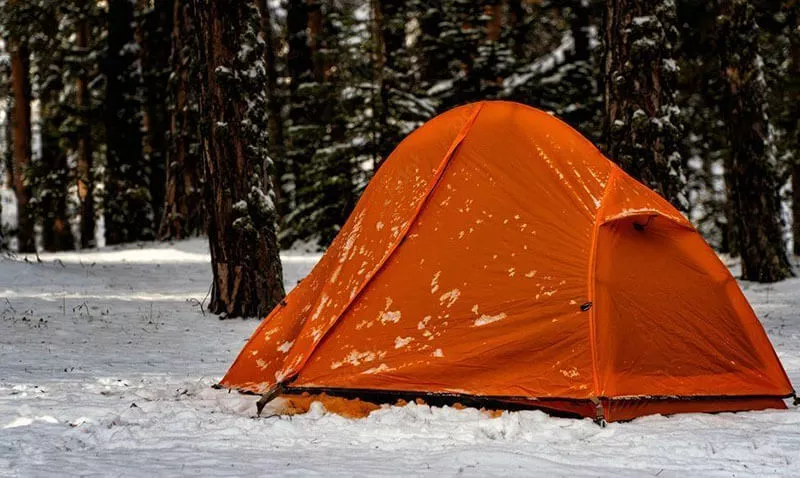
What to wear for Winter Camping.
When temperatures drop and snow starts to fall, that doesn’t mean your camping trips have to come to an end. In fact, some would argue that winter is the best time to camp. when you can enjoy the peace and quiet of the season without the crowds that flock to campgrounds in the warmer months.
Of course, before you head out into the cold, you need to make sure you have the proper gear. That starts with clothing: Mainly pants, socks and shoes. Here’s what you need to stay warm and comfortable while winter camping.
Warm layers are key when camping in cold weather. Start with a base layer of synthetic or wool fabric next to your skin to wick away moisture and help regulate your body temperature. On top of that, add an insulating layer like fleece or down, and finish with a waterproof and windproof outer layer.
Your feet are just as important as the rest of your body when it comes to staying warm in cold weather, so make sure to pack socks made from synthetic or wool fabric, as well as insulated boots. It’s also a good idea to pack an extra pair of socks in case your feet get wet.
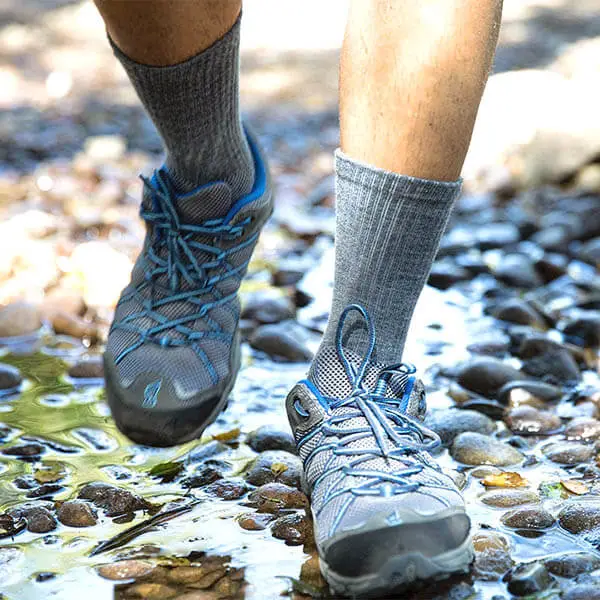
Your hands are also susceptible to the cold, so be sure to pack gloves or mittens that will keep them warm. If you plan on doing any cooking while camping, you’ll also want to bring along some pot holders or oven mitts to protect your hands from hot surfaces.
Don’t forget about your head and face either. A hat will help keep your head warm, and if it has ear flaps or a brim, all the better. A scarf or neck gaiter can also help keep your neck and face warm, and if it’s made from a material that covers your nose and mouth, it can also help protect you from breathing in cold air.
Finally, make sure you have a good sleeping bag rated for cold weather. Down is typically more compressible and lighter than synthetic insulation, making it a good choice for backpacking trips. But synthetic bags are usually less expensive and still provide good warmth. Whichever type you choose, make sure it’s rated for temperatures at least 10-15 degrees colder than the coldest temperature you expect to encounter during your trip.
With the right clothing and gear, winter camping can be a fun and rewarding experience. Just make sure you’re prepared for the cold weather before heading out into the wilderness.

Food and Drink Tips for Winter Camping
When it comes to food and drink while winter camping, there are a few things to keep in mind.
First, it is important to stay hydrated. Drink plenty of water and avoid alcoholic beverages. It is also important to eat regularly, even if you don’t feel very hungry. Eating will help keep your energy up and prevent you from getting too cold.
There are a few different ways to keep food and drinks warm while camping in the winter. One is to use a thermos. This can be filled with hot coffee, tea, or soup. Another option is to bring along a small portable stove and cook meals or heat up canned goods. Be sure to pack plenty of extra food and water, as well as any medications you may need.
In terms of what to eat, bring along foods that are high in calories and will give you lasting energy. Good options include trail mix, nuts, dried fruit, granola bars, and peanut butter. It is also a good idea to bring along some comfort foods that you enjoy. This makes the camping trip more enjoyable and helps you stay warm.

Preventing Cold Injuries While Winter Camping
When the temperatures drop, it’s important to take extra care to prevent cold injuries while winter camping. Here are some tips:
Dress in layers: Wear loose-fitting, lightweight, and water-repellent clothing in layers. The outer layer should be windproof.
Stay dry: Wet clothing loses its insulating ability and can lead to hypothermia. If your clothing does get wet, change into dry clothes as soon as possible.
Protect your extremities: Wear a hat, scarf, and gloves. Make sure your boots are waterproof and well insulated.
Eat and drink regularly: Eating and drinking help your body generate heat.
Avoid alcohol: Alcoholic beverages can cause your body to lose heat faster.
Monitor your body temperature: Pay attention to how you’re feeling. If you start to feel cold, tired, or clumsy, that’s a sign that you need to warm up.

Making camp in the snow
There are a few things you need to take into consideration in order to have a safe and enjoyable experience. When it comes to camping in the snow.
Start by finding a suitable location. Make sure that the area is free of any large trees or branches that could fall and injure you. Choose an area that is flat so you don’t have to worry about your tent rolling down a hill in the middle of the night.
Once you’ve found a suitable location, the next thing is to start gathering wood for your fire. If there is no wood available, you can always use your camping stove to melt snow for water. Once you have your fire going, start working on insulating your tent. This can be done by using blankets, sleeping bags, or even clothes. Anything that will create a barrier between you and the cold ground will work.
After your tent is insulated, make sure you have enough food and water. It’s always a good idea to bring more than you think you’ll need just in case something happens and you can’t make it back to your car. Once you have everything set up, sit back and enjoy the peace and quiet that only camping in the snow can provide.
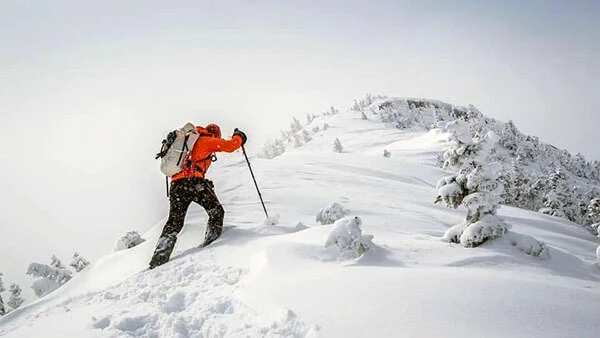
Essential gear for winter camping
When it comes to winter camping, there is a certain amount of essential gear that is needed to make the experience both enjoyable and safe. Some of the most important items include a good quality tent, sleeping bag, and stove. Here is a closer look at each of these items, as well as some other essential gear for winter camping.
Tent: A good quality tent is essential for any type of camping, but it is especially important for winter camping. A tent that is specifically designed for winter camping will have features such as thicker walls and a waterproof canopy.
Sleeping Bag: A sleeping bag that is rated for cold weather is essential for winter camping. Look for a sleeping bag that has a high fill power rating and is made from synthetic or down material.
Stove: A stove is another essential piece of gear for winter camping. Choose a stove that is specifically designed for use in cold weather and that has enough fuel to last for the entire trip.
Other Essential Gear: In addition to a tent, sleeping bag, and stove, there are a few other items that are essential for winter camping. These include extra blankets, warm clothing, and a first aid kit.
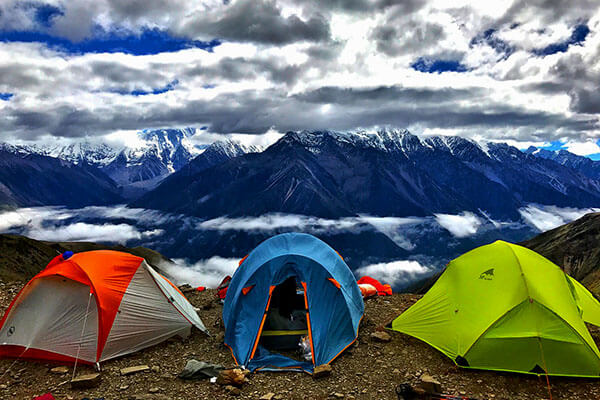
Winter Camping Tips and Hacks For The Winter Campers
Winter camping can be a great experience, but it can also be a bit challenging. Here are a few tips and tricks to help you make the most of your winter camping trip.
Pack the right winter camping gear
Reuse orange peels to cook
Join a Backpacker
Layer your socks to keep your feet toasty, blistered, and frostbite free in the cold
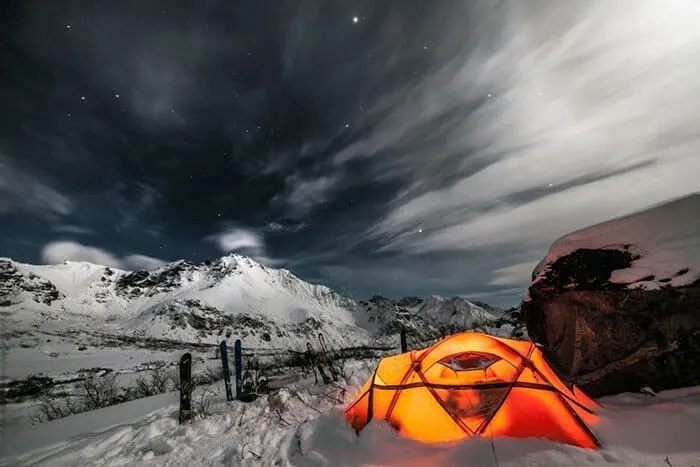
How to manage tent camping on high-wind nights?
When it comes to camping, there are a lot of things that can go wrong. One of the most frustrating things that can happen is when you’re all set up for a peaceful night camping under the stars, only to have the weather turn and the wind start howling.
If you find yourself in this situation, don’t despair! There are some things you can do to manage your tent camping on high-wind nights.
First and foremost, make sure that your tent is properly staked down. If it’s not, the wind will catch it and start pulling it up out of the ground, which will ruin your trip, and might lead to cold injuries.
Once your tent is staked down, weigh it down with some heavy objects if possible. This will help keep it from blowing away in the wind.
If you have a tarp, you can also use it to help secure your tent. Simply put the tarp over the top of your tent and weigh it down with some rocks or other heavy objects. This will provide an extra layer of protection against the wind.
Another thing you can do is to make sure that all of your gear is packed up inside of your tent as tightly as possible. This will help keep everything from blowing around inside of your tent and possibly damaging it.
Finally, just relax and ride out the storm! There’s not much you can do about high winds, so just make sure your tent is secure and wait it out. With any luck, the wind will die down eventually and you can get back to enjoying your camping trip.
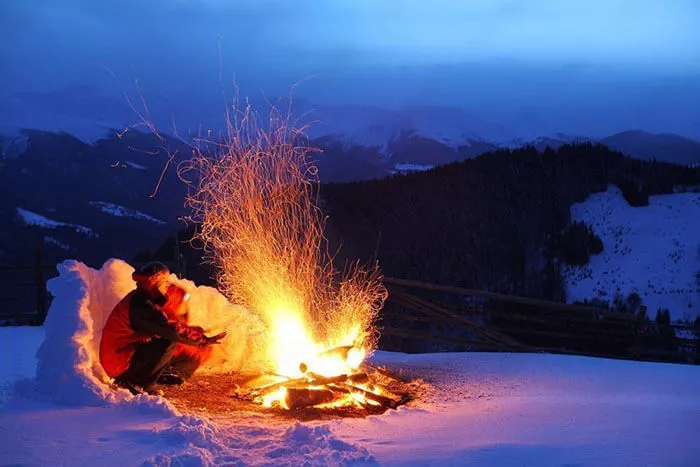
Make tinder with a pencil sharpener
If you’re looking for a new and interesting way to make tinder, you can try using a pencil sharpener! This method is simple, and quick, and all you need is a pencil sharpener and something to catch the shavings (like a piece of paper or foil). Just sharpen your pencil until you have a good amount of shavings, then carefully pour them into your tinder bundle. The shavings will act as excellent kindling and help get your fire going quickly.
Tarps are essential gear for winter camping!
If you love winter camping, then you know that tarps are essential gear! They provide shelter from the elements and can be used to create a comfortable and cozy campsite. Here are some tips for choosing and using tarps for winter camping.
When choosing a tarp, make sure to get one that is made of durable materials. It should be waterproof and windproof to protect you from the elements. It is also important to choose a tarp that is large enough to cover your entire campsite.
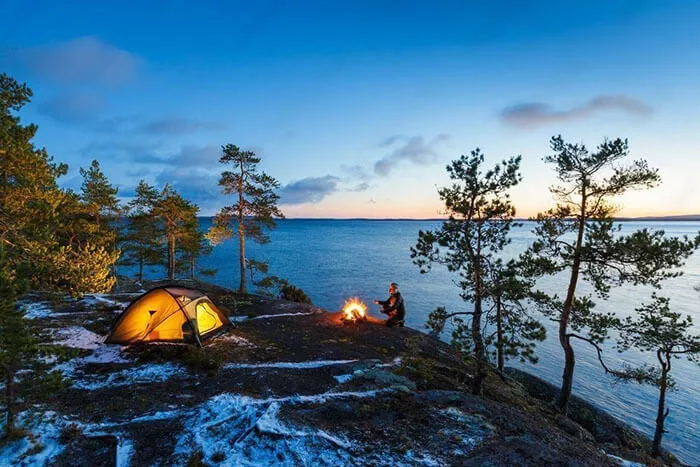
Once you have your tarp, set it up over your campsite before setting up your tent. This will give you extra protection from the wind and rain. You can also use your tarp to create a makeshift wall around your tent to further block out the elements.
To keep your tarp in place, use stakes or rocks to secure it to the ground. You can also use guy lines to help keep it taut. If you are using a tarp with a floor, make sure to put a groundsheet under it to protect the floor from getting wet.
When it comes to using your tarp, the sky’s the limit! You can use it as a shelter, a windbreak, or even a privacy screen. Get creative and make the most of your tarp to make your winter camping experience even better!
Prevent Spills on Your Dry Gear—Try a Reusable Straw
One of the worst things that can happen on your backcountry trip is having your gear get wet. Whether it’s from rain, sweat, or accidentally dropping your water bottle, wet gear can ruin a day in the mountains or on the trails.
One way to prevent spills and keep your gear dry is to use a reusable straw. These straws are made from durable materials like stainless steel or silicone, and they can be used over and over again.
Reusable straws have a number of benefits:
1. They’re better for the environment than disposable straws.
2. They’re less likely to leak than disposable straws.
3. They’re easy to clean – just rinse them out with water after each use.
4. They’re more durable than disposable straws, so you don’t have to worry about them breaking or getting lost.
5. They’re less expensive than disposable straws in the long run.
Whether you’re using a reusable straw for your morning coffee or your afternoon hike, you can feel good knowing that you’re doing your part to reduce waste and protect the environment.
Always check weather conditions and hazards
If you’re planning on going winter camping, always check the weather conditions and hazards before you head out. This will help you be prepared for what to expect and avoid any dangerous situations.
The first thing is to check the forecast for the area you’ll be camping in. This will give you an idea of what the weather will be like and if there are any storms expected. It’s also a good idea to check the avalanche forecast if you’ll be in an area where avalanches are a possibility.
Once you know what the weather conditions will be like, you can start packing accordingly. Make sure you have warm clothing, plenty of food and water, and any other supplies you might need. It’s also a good idea to bring along a first-aid kit and a GPS system in case you get lost.
When you’re out camping, always be aware of your surroundings and pay attention to the weather conditions. If it starts to get too cold or windy, head back to camp and stay warm. And if you hear an avalanche coming, get to high ground as quickly as possible.
By following these tips, you can have a safe and enjoyable winter camping trip. Just make sure to always check the weather conditions and hazards before you go.
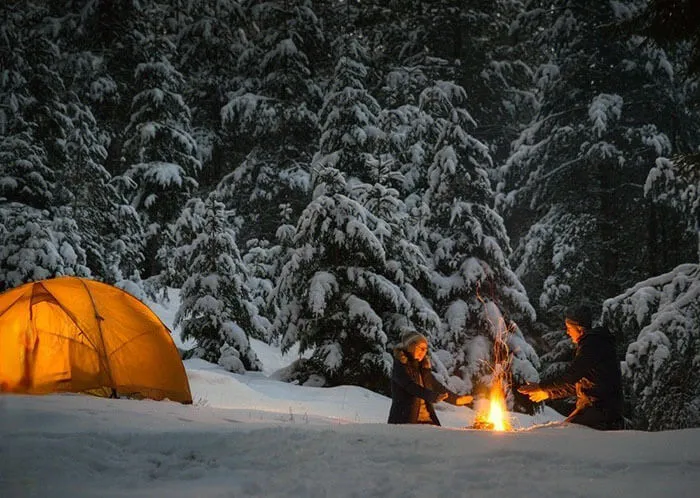
Use snow as a winter camping tool
When it comes to winter camping, few things are as versatile as snow. It can be used for everything from building a shelter to insulating your sleeping bag. Here are some tips on how to use snow as a winter camping tool.
Building a snow shelter is a great way to stay warm in winter. A quinzhee is one type of snow shelter that is easy to build. To make a quinzhee, start by digging a pit in the snow that is big enough for you to lie down in. Then, pile the excavated snow on top of the pit, packing it down as you go. Once the quinzhee is built, hollow out the inside and line it with insulating materials such as leaves or pine needles.
Another way to use snow for insulation is to fill plastic bags with it and place them around your sleeping bag. This will help keep you warm during the night.
Snow can also be used to collect water. Melt the snow over a fire or stove and filter it through a clean cloth to remove any impurities.
Finally, snow can be used as traction when hiking on icy trails. Spread some snow on the ground in front of you and walk slowly and carefully. If you start to slip, the snow will help you regain your footing.

